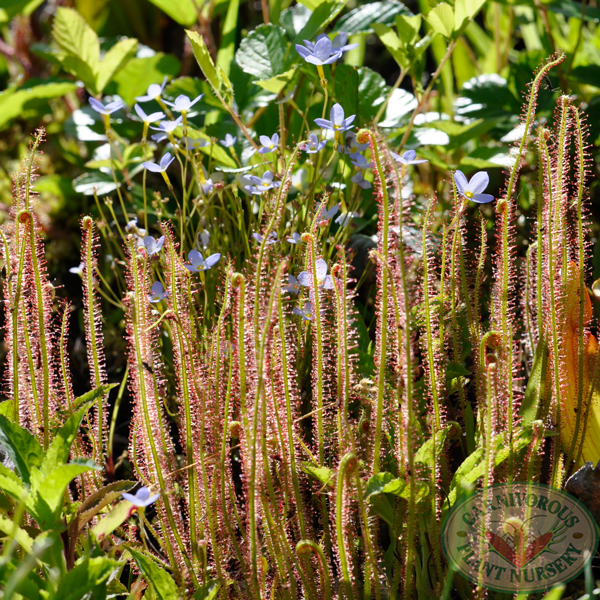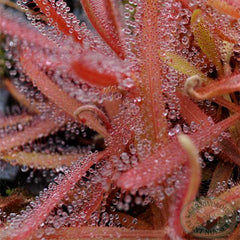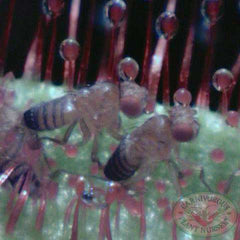
Growing Tips for Sundews



Drosera spp.-Sundews
Soil: 5:1 peat:sand
Container: 4" plastic pot
Watering: moist to wet
Light: full to part sun
Temperature: warm summer, cool winter-tolerates frost
Humidity: medium
Location: outdoors, windowsill, terrarium, greenhouse
Dormancy: yes
Habitat
Sundews are one of the most diverse groups of Carnivorous Plants and grow in a variety of biomes, including the arctic and the desert. However, most sundews grow in typical Carnivorous Plant conditions of sunny, wet, sandy peat soil in tropical or temperate habitats. They are common Carnivorous Plants in bogs, pocosins, and fens. Most sundews grow in association with Sphagnum Moss.
Culture
Most sundews thrive in a standard Carnivorous Plant soil mix, I prefer a recipe heavier on the peat. Some prefer sandier soil and others prefer live Sphagnum Moss. Use mineral-free water and for most sundews, keep the soil very wet. The tray method works well. Stand the pot in a tray or saucer and keep about 1/2-1” (1.25-2.5cm) of water in it at all times during the growing season. Sundews prefer full sun and develop their best red colors in very bright light. A few sundews prefer indirect, low level light. Most sundews do quite well at room temperature, but a few prefer very warm or cool conditions.
Propagation
Sundews are easily propagated from leaf cuttings, root sections, divisions, and seeds. A decapitated sundew will often grow a new plant from the roots, and roots will grow from the severed plant. Seeds are slow and need light and steady conditons. Some species need stratification (cool, damp winter). Tissue culture works well for clones.
Dormancy
Species native to temperate and arctic zones require dormancy. These will develop a winter bud or hibernacula in the late fall. Dormant plants should be kept somewhat drier, but the soil should remain evenly moist. Some sundews require winter freezes. Some sundews require summer dormancy and a completely dry soil. Tropical sundews do not go dormant and will grow year round.
Feeding
Sundews do a marvelous job of attracting and catching prey all on their own. Let them catch their own food. They only need to feed a few times a month, and do not require daily feeding. Plants grown indoors or in a terrarium will benefit from supplemental feedings using wingless fruit flies or other very small insects.
Other Considerations
Most sundews will flower and go to seed readily. Some can even become “weeds” in a collection. The seeds are some of the smallest in the world and can be readily collected by shaking the flower stalk over a small dish. Some sundew seeds require stratification, which is a storage period in cold, damp, humid conditions for 3-4 months.
Most sundews will readily propagate from leaf cuttings. Tear the leaf away from the stem with a small section of the stem still intact. Float the leaf in clean, mineral-free water for a few weeks, and small plantlets will form along the leaf margins.
